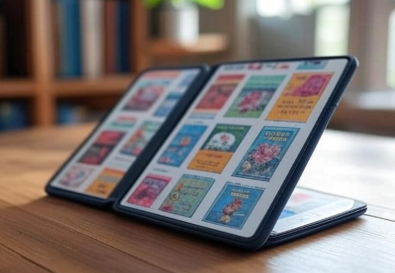You wake up, grab your coffee, and before you even check your emails, you’re already reaching for your phone. Not for social media or news—but for those five little squares that have somehow become the most important part of your morning routine. If this sounds familiar, congratulations: you’ve joined over 10 million people worldwide who are absolutely hooked on Wordle.
But what makes this seemingly simple word puzzle so incredibly addictive? Why do we find ourselves sharing those cryptic colored grids with friends, family, and complete strangers on social media? And more importantly, how did a game that gives you just six chances to guess a five-letter word manage to break the internet in 2022 and still dominate our daily routines in 2025?
The Deceptively Simple Game That Changed Everything
For those who somehow managed to avoid the Wordle craze (where were you hiding?), here’s how it works: every day, there’s exactly one five-letter word to guess. You have six attempts. After each guess, the game shows you which letters are correct and in the right position (green), which letters are in the word but in the wrong spot (yellow), and which letters aren’t in the word at all (gray).
That’s it. No levels to unlock, no coins to collect, no premium subscriptions to buy. Just you, five letters, and six tries.
Josh Wardle (yes, that’s where the name comes from) originally created this game for his partner who loved word puzzles. He had no idea he was about to accidentally engineer one of the most psychologically compelling games in recent memory. When the New York Times purchased Wordle for an undisclosed seven-figure sum in early 2022, it was clear this wasn’t just another flash-in-the-pan internet trend.
The Psychology Behind Your Wordle Addiction
Here’s where things get really interesting. Wordle isn’t just a game—it’s a masterclass in human psychology wrapped up in a neat little five-by-six grid.
The Dopamine Hit That Keeps You Coming Back
Every time you guess a letter correctly, your brain releases a small burst of dopamine—the same chemical that makes chocolate, social media likes, and winning at slot machines feel so good. But here’s the clever part: Wordle doesn’t give you all the dopamine at once. According to British psychologist Lee Chambers, Wordle activates both the language and logic parts of our brain, and our brains enjoy puzzles because they represent a challenge or difficulty to overcome.
The game creates what psychologists call “intermittent reinforcement”—you get rewarded (those satisfying green squares), but not predictably. Sometimes you nail it in three guesses and feel like a genius. Other times you’re sweating bullets on your sixth and final attempt. This unpredictability is exactly what makes slot machines so addictive, and Wordle has accidentally recreated the same psychological mechanism.
The Power of Scarcity: One Game Per Day
One crucial feature of Wordle is that you can do one word puzzle per day only, and the one word per day is the same for everyone. This isn’t a bug—it’s the feature that makes Wordle so brilliant.
By limiting you to just one puzzle per day, Wordle does something most mobile games fail at: it leaves you wanting more without letting you overindulge. You can’t binge-play Wordle until you’re sick of it. Instead, you get your daily dose, and then you have to wait. This creates anticipation and makes tomorrow’s puzzle feel like a small event to look forward to.
Think about it—when was the last time you looked forward to something that took five minutes and was completely free?
The Visual Language That Took Over Social Media
Those little colored squares you see flooding your social media feeds aren’t just random dots—they’re a form of visual communication that Wordle accidentally invented. This is down to a psychology principle called the Picture Superiority Effect, which says that people remember and understand images better than words.
When someone posts their Wordle result, they’re not just bragging (okay, maybe they are a little). They’re telling a story. That yellow square in position two followed by three grays tells other Wordle players exactly the kind of struggle you went through. Fellow players can look at your grid and immediately understand your journey, even without knowing what the actual word was.
This visual language created an instant community. Suddenly, strangers on Twitter were bonding over particularly tricky words, and group chats were filled with people celebrating or commiserating over their daily results.
The Strategy Behind the Madness
While Wordle might look like a game of luck, serious players know there’s real strategy involved. The best starting words contain common vowels and consonants to maximize information gathering, with words like AUDIO containing 4 vowels being excellent for vowel detection.
Here’s what the pros know:
Start Smart, Not Random Focus on common letters: E, T, A, O, I, N, S, H, R. These appear most frequently in English words. Your first guess should be a vowel-heavy word that gives you maximum information. Popular choices include ADIEU, AUDIO, or OUIJA—all designed to reveal as many vowels as possible right off the bat.
Avoid Duplicate Letters Early Don’t use words with duplicate letters (like SPEED) in your first 2-3 guesses. Maximize unique letter testing. In the early game, you want to test as many different letters as possible, not confirm duplicates.
Think Like a Detective Every yellow and green square is a clue. The real skill in Wordle isn’t just knowing words—it’s using the process of elimination efficiently. Sometimes the best guess isn’t a word you think might be right, but a word that will give you the most information about what the answer could be.
Stay Flexible The secret to keeping a streak alive involves switching between strategies and avoiding getting stuck following a single rigid strategy every day. The best Wordle players adapt their approach based on what they learn from each guess.
Why Wordle Succeeded Where Others Failed
In a world of increasingly complex games with battle passes, loot boxes, and endless upgrade paths, Wordle succeeded by going in the completely opposite direction. It’s refreshingly simple, completely free, and respects your time.
No Dark Patterns Unlike most mobile games, Wordle doesn’t try to manipulate you into spending money or playing longer than you want. There are no pop-ups asking you to buy more lives, no energy systems that limit your play, and no pressure to invite friends to unlock features.
Genuine Social Connection Wordle started to take off when the results of one’s guesses could be shared in a way that created genuine social interaction without spoilers. The sharing mechanism is brilliant—it lets you show off or commiserate without ruining the puzzle for others.
Cognitive Benefits Regular Wordle playing actually exercises your brain in meaningful ways. It improves vocabulary, pattern recognition, and logical deduction skills. Players often report learning new words or being reminded of words they hadn’t thought about in years.
The Community That Built Itself
What makes Wordle special isn’t just the game—it’s the community that formed around it. Unlike toxic gaming communities or competitive esports environments, the Wordle community is remarkably supportive and inclusive.
People celebrate others’ successes, commiserate over particularly difficult words, and share strategies freely. There’s something uniquely unifying about everyone trying to solve the same puzzle on the same day. It creates a shared experience that transcends age, location, and background.
The game has also spawned countless variations—Dordle (two words at once), Quordle (four words), Absurdle (an adversarial version that changes the target word), and dozens of themed versions for everything from geography to music.
The Staying Power of Simple Pleasures
While exact daily numbers aren’t publicly disclosed, available evidence indicates well over 10 million Wordle players each day in 2025, securing its place as one of the most enduring digital puzzle games worldwide.
Three years after its viral explosion, Wordle has proven it’s not just a fad. It has genuine staying power because it taps into something fundamental about how humans enjoy challenges and social connection.
In our age of information overload and digital burnout, there’s something deeply satisfying about a puzzle that takes five minutes, has a clear solution, and gives you a small sense of accomplishment to start your day. It’s a brief moment of focus in an otherwise chaotic world.
The Future of Five Letters
As we move deeper into 2025, Wordle continues to evolve while maintaining its core simplicity. The New York Times has been careful not to mess with the formula that made it special, though they’ve added features like an archive of past puzzles and integration with their Games subscription.
The real question isn’t whether Wordle will stay popular—it’s whether the gaming industry will learn the right lessons from its success. In a world obsessed with engagement metrics and retention rates, Wordle succeeded by respecting players’ time and intelligence.
Maybe that’s the most important lesson of all: sometimes the best way to keep people coming back isn’t to trap them in your game, but to give them something genuinely worth returning to.
So tomorrow morning, when you wake up and reach for your phone, remember that you’re not just playing a word game. You’re participating in a daily ritual shared by millions of people worldwide, exercising your brain, and enjoying one of the purest forms of digital entertainment ever created.
Those little green squares aren’t just pixels—they’re tiny daily victories in a world that often feels short on wins. And honestly? In 2025, we could all use a few more of those.



